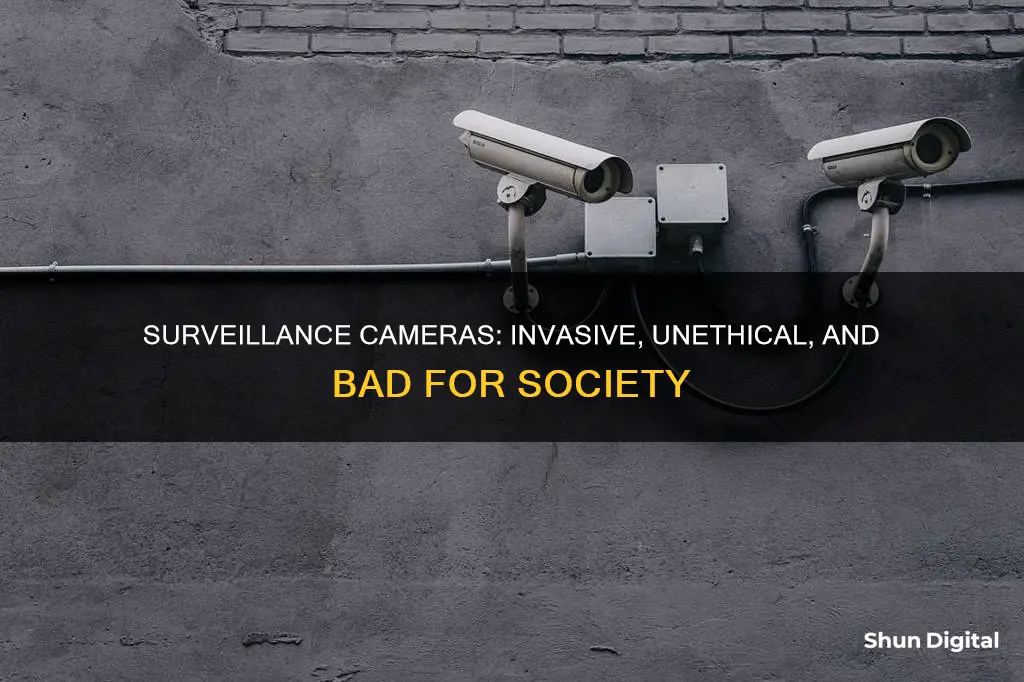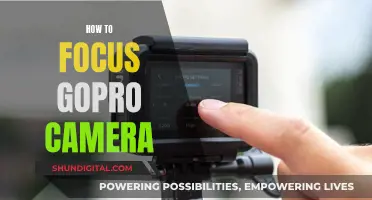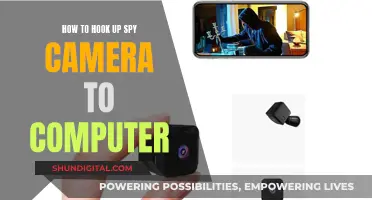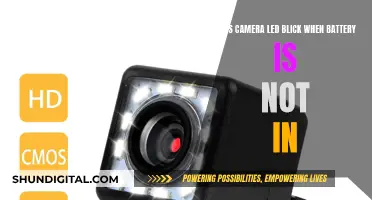
The use of surveillance cameras in public spaces is a highly debated topic, with some advocating for increased public safety and others expressing concerns about privacy invasion. While surveillance cameras can deter crime and aid investigations, there are several reasons why they might be considered bad. Firstly, they raise serious privacy concerns as they monitor individuals' movements and activities, creating a detailed picture of their private lives. Secondly, there is a lack of control or limits on their use, leading to potential abuse and misuse by law enforcement. Thirdly, the effectiveness of surveillance cameras in preventing crimes, especially terrorist attacks, has not been proven, and they may not significantly deter determined criminals. Additionally, the cost of implementing and maintaining surveillance systems can be high, and the quality of footage is often poor due to various technical limitations. Finally, the widespread use of surveillance cameras can have a chilling effect on public life, making people more self-conscious and cautious in their daily activities.
| Characteristics | Values |
|---|---|
| Invasion of Privacy | Surveillance cameras can monitor an individual's private life, including their movements and activities. |
| Abuse and Misuse | Surveillance systems are susceptible to abuse and misuse by those operating them, including law enforcement. This can take the form of criminal abuse, institutional abuse, personal abuse, discriminatory targeting, and voyeurism. |
| Ineffectiveness | The effectiveness of surveillance cameras in preventing crimes, especially terrorist attacks, has not been proven. |
| High Cost | Surveillance cameras and their associated systems can be expensive to acquire, install, and maintain. |
| Vulnerabilities | Security cameras are electronic devices that can be disabled or tampered with by nefarious individuals. |
| Inability to Prevent Theft | Surveillance cameras may not be effective in stopping determined thieves or criminals. |
What You'll Learn

Surveillance cameras are an invasion of privacy
Surveillance cameras are becoming an increasingly common feature of public life. While some people feel more secure with the presence of cameras, others feel that they are an invasion of privacy.
When walking down the street, driving a car, or spending time with friends, surveillance cameras monitor and record the movements of individuals, creating a detailed picture of their private life. This is information that people generally do not want others or the government to know.
In addition, surveillance systems are susceptible to abuse. There are several ways in which surveillance cameras are likely to be misused:
- Criminal abuse: Surveillance systems can be used by law enforcement for criminal misuse, such as gathering information on individuals for blackmail.
- Institutional abuse: Bad policies can be set at the top, turning an entire law enforcement agency towards abusive ends.
- Abuse for personal purposes: Surveillance tools can be abused for personal reasons, such as stalking or threatening individuals.
- Discriminatory targeting: Camera operators may focus disproportionately on people of certain races. In Great Britain, for example, "Black people were between one-and-a-half and two-and-a-half times more likely to be surveilled than one would expect from their presence in the population."
- Voyeurism: Camera operators may use the cameras to voyeuristically spy on individuals, particularly women.
The lack of limits or controls on camera use is a significant problem. There is no check-and-balance system in place to prevent abuses from occurring. The technology is evolving rapidly, and there is a lack of clear boundaries and rules regarding the use of surveillance cameras. This poses a danger to civil liberties and privacy rights.
The presence of public cameras can also have a chilling effect on public life, changing the character of public spaces. When citizens are aware that they are being watched by the authorities, they may become more self-conscious and less free-wheeling in their behaviour. They may become more cautious about their appearance, their reading choices, and their movements, for fear of calling attention to themselves or offending those in power.
While surveillance cameras can provide benefits in terms of public safety and crime reduction, these benefits must be balanced against the potential invasion of privacy and other negative consequences.
Best Long-Lasting Camera Batteries: Power Your Photography
You may want to see also

They are vulnerable to abuse
Surveillance cameras are vulnerable to abuse and can be misused in several ways. Firstly, they can be exploited for criminal abuse, where law enforcement officials with ill intentions use the footage for blackmail or other personal purposes. For instance, in 1997, a senior police official in Washington, DC, used police databases to gather information on patrons of a gay club and attempted to blackmail married individuals.
Secondly, institutional abuse can occur when bad policies are set at the top, leading an entire law enforcement agency to be directed towards abusive ends. This is more likely to happen during periods of intense social and political conflict. For example, during the Civil Rights movement and the Vietnam War, the FBI and several police departments conducted illegal operations to spy on and harass political activists.
Thirdly, powerful surveillance tools can be abused for personal reasons. An investigation by the Detroit Free Press revealed that Michigan law enforcement officers used a database to stalk women, threaten motorists, and track estranged spouses.
Fourthly, discriminatory targeting can occur when operators of video camera systems bring their biases to the job. In Great Britain, studies found that camera operators disproportionately monitored people of colour. Black individuals were between one-and-a-half to two-and-a-half times more likely to be surveilled than expected based on their population representation.
Lastly, surveillance cameras can be misused for voyeurism. Studies in Britain found that male camera operators frequently used the cameras to spy on women, with one in ten women being targeted for voyeuristic reasons.
The lack of limits or controls on camera use exacerbates the problem of abuse. Without clear boundaries and legally enforceable rules, surveillance technologies are susceptible to mission creep and can lead to significant dangers to civil liberties.
Capturing Sports Action: Keeping Your Camera in Sports Mode
You may want to see also

They are costly
Surveillance cameras can be expensive. The cost of installing a surveillance camera system ranges from $593 to $2,040, with an average cost of $1,298. The price varies depending on the number of cameras, upgraded features, and the type of system (IP or CCTV).
The average cost to install security cameras is about $125 to $450 per camera, including labor. A set of four cameras, labor, and a monitoring or recording system typically costs around $1,075.
There are also additional costs associated with surveillance cameras. For example, some cameras require a subscription for cloud storage, which can cost around $6 per month or $60 per year. Facial recognition cameras can cost between $150 to $250 per camera, and the cost of installing a wired surveillance camera ranges from $100 to $500 per camera.
The high costs of surveillance cameras are a significant disadvantage, especially when considering the limited benefits they provide. For instance, in Britain, where cameras have been extensively deployed in public places, studies have shown that they have not reduced crime overall.
Furthermore, the maintenance and personnel costs associated with surveillance cameras can be substantial. In Michigan, officials concluded that the limited results of public video surveillance could not justify the high costs.
Therefore, the costliness of surveillance cameras is a significant drawback, and it is essential to consider whether the potential benefits outweigh the financial burden.
Bus Camera Tickets: How Many Were Issued?
You may want to see also

They are ineffective at preventing crime
Why Surveillance Cameras Are Ineffective at Preventing Crime
Surveillance cameras are often touted as an effective way to deter crime and improve public safety. While there is some evidence to support this claim, a closer examination reveals that the effectiveness of surveillance cameras in crime prevention is questionable at best.
Firstly, it is important to distinguish between different types of crimes. Surveillance cameras may be effective in deterring certain types of crimes, such as property crimes and burglaries. For example, a study by the UNC Department of Criminal Justice & Criminology found that half of the 422 burglars surveyed considered outdoor security cameras as effective deterrents. Similarly, the presence of security cameras can reduce the likelihood of car theft, as potential thieves know that their actions are more likely to be caught on camera.
However, when it comes to more serious crimes, such as terrorist attacks or violent assaults, the presence of surveillance cameras has little to no impact on deterring criminals. Suicide attackers, for instance, are clearly not deterred by the presence of video cameras and may even be attracted to the potential media coverage that cameras can provide. In the case of the Boston Marathon bombing, surveillance cameras were instrumental in identifying the suspects after the attack, but they did not prevent the attack from happening in the first place.
Furthermore, the effectiveness of surveillance cameras relies on several factors, including proper placement, lighting conditions, and technical functionality. For example, a study of camera systems from 2001 to 2003 by the Queen's University Surveillance Studies Centre found 168 technical failures that prevented the evidence from being used in criminal trials. Additionally, cameras placed in a downtown bar street in Lincoln, Nebraska, did not help identify criminals or prevent crimes, with 128 assaults occurring within 500 feet of the cameras.
Moreover, the use of surveillance cameras for crime prevention raises ethical concerns, particularly regarding privacy invasion and the potential for abuse. Surveillance cameras can create a complete picture of an individual's private life, and without proper regulations and accountability measures, there is a risk of misuse by law enforcement or other authorities.
In conclusion, while surveillance cameras may have some impact on deterring certain types of crimes, they are ultimately ineffective at preventing crime on a larger scale. The limitations of surveillance cameras, coupled with the ethical concerns surrounding their use, highlight the need for a more comprehensive approach to crime prevention that addresses the root causes of criminal behaviour rather than solely relying on surveillance technology.
Jump-Starting Your DJI Camera Battery: A Quick Guide
You may want to see also

They can be vulnerable to damage
Surveillance cameras are vulnerable to damage and can be disabled in several ways. Firstly, as electronic devices, they can be impacted by physical force or water damage. While outdoor cameras are designed to withstand standard weather patterns, they can be damaged by debris carried by strong winds, lightning strikes, or tampering by nefarious individuals.
Secondly, with the advancement of technology, surveillance cameras have become vulnerable to cyber-attacks and hacking. As more facilities adopt advanced IP (Internet Protocol) cameras, they expose themselves to potential hackers who can gain unauthorized access to system networks, manipulate or steal data, and even render cameras useless. This is often due to poor cybersecurity measures, such as weak or default passwords, and a lack of regular updates to security settings and firmware.
Additionally, certain security camera features, such as "peer-to-peer" (P2P) functionality, can introduce serious vulnerabilities. These flaws allow hackers to exploit and access cameras remotely, intercept video feeds, and steal device passwords without the owner's knowledge. As a result, millions of security cameras worldwide have been compromised, raising serious privacy and security concerns.
To mitigate these risks, it is essential to implement robust cybersecurity measures, including strong passwords, regular updates, and separating camera networks from critical systems to minimize potential damage in the event of a breach.
Troubleshooting Surface 4 Camera Focus Issues
You may want to see also
Frequently asked questions
Surveillance cameras are considered bad because they pose a threat to people's privacy, they can be easily abused, and their effectiveness in deterring crime has not been proven.
Surveillance cameras can be used to create a complete picture of an individual's private life. They record everyone within their range, and this footage can be accessed and viewed by others without an individual's knowledge or consent.
Surveillance cameras can be abused in several ways, including criminal abuse, institutional abuse, abuse for personal purposes, discriminatory targeting, and voyeurism. For example, law enforcement officials may use the information gathered from surveillance cameras for blackmail or to stalk women.







